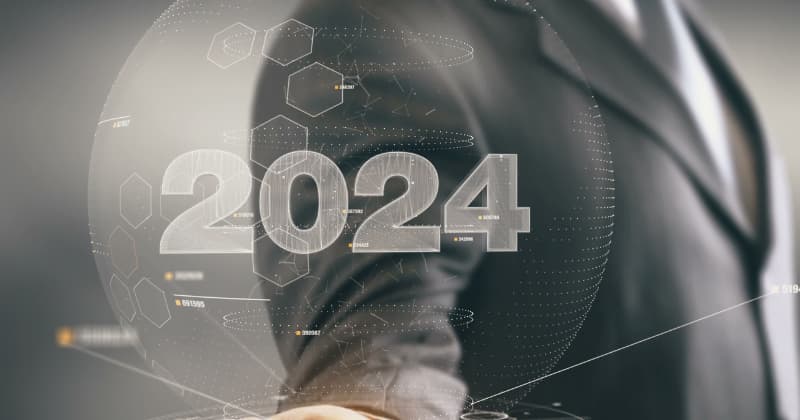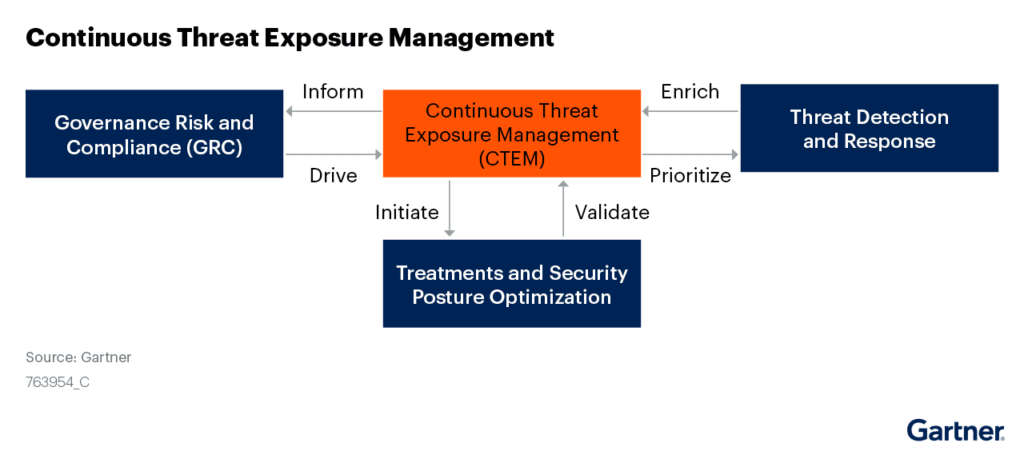Top Strategic Technology Trends in 2024

As 2023 draws to a close, we review leading industry consultant Gartner’s top ten predictions for trending strategic technologies in 2024. These are the frameworks or approaches that Gartner’s experts think companies in many industries will be adopting during the coming year (and beyond) as they strive for success.
1. AI Trust, Risk and Security Management (AI TRiSM)
Now that AI has taken root as a mainstream business technology, companies need to ensure that their AI models are trustworthy, secure, accurate, and free from bias. We’ve already seen examples of how bias in AI can cause trouble, and how large language models can sometimes hallucinate responses, producing answers that just aren’t true. AI TRiSM is a set of controls that keeps AIs honest and secure, and Gartner thinks that by 2026, enterprises that apply them to AI applications will reduce bad information by 80% and improve their decision-making accuracy.
2. CTEM
CTEM, or Continuous Threat Exposure Management is another framework that represents a paradigm shift for digital security. CTEM is already in use, but throughout 2024 we will see greater adoption as organizations move beyond the threat management approach to which is no longer considered adequate. While it focuses only on managing technical vulnerabilities, CTEM takes a broader view by continuously identifying, assessing, prioritizing, and validating threats, then mobilizing resources against the ones that are the biggest threat to its operations.

Here’s how that approach breaks down:
· Scoping – identifying business-critical assets.
· Discovery – creating an inventory of all risks.
· Prioritization – ranking the risks based on urgency and severity.
· Validation – confirming the highest priority risks and testing the response plan.
· Mobilization – fixing the risks and informing stakeholders.
If it isn’t immediately obvious, this cycle repeats indefinitely. CTEM naturally aligns with an organization’s business objectives and enables it to reduce its risk exposure and boost resilience. Gartner believes that by 2026, organizations that base their security investments on a CTEM program will achieve a 66% reduction in breaches.
3. Sustainable Technologies
Gartner estimates that by 2027, 25% of CIOs will be financially incentivized to adopt sustainable technologies. The aim of this will be to encourage them to use digital technologies in their organizations to reach social, governance, and environmental sustainability targets. Examples of technologies they could adopt include blockchain to help verify that supply chains meet ethical targets, AI to ensure the best use of resources and to minimize waste, and IoT devices to monitor resource usage in real-time and help reduce carbon emissions.
4. Platform engineering
Platform engineering is a specialism within software development that focuses on creating the toolchains and workflows used by software developers. The advantage of such bespoke platforms for businesses is that they free developers to focus on producing software rather than managing the tools they use to do it. It’s a separation of specialisms that adds more value to each, and Gartner expects 80% of large software engineering organizations to have their own platform engineering teams by 2026.
5. AI-Augmented Development
Gartner also thinks that by 2028, 75% of enterprise software engineers will be using AI coding assistants (compared to less than 10% now) and it’s easy to see why. They free up developers to focus on higher-level activities like design work by taking over a lot of the lower-value work that slows them down, so these assistants will be producing fresh code, updating legacy code to modern languages, turning designs into code, and testing apps. Happier software engineers are easier to retain and they produce higher-quality work, so everyone wins.
6. Industry Cloud Platforms, (ICPs)
Generic cloud services are great for most, but sometimes a business needs a cloud platform that’s exactly tailored to its specific needs. It’s hard to imagine a generic cloud service that perfectly fits the needs of universities, pharmaceutical companies, and banks because their requirements are all so different. ICPs are cloud platforms that can be shaped so they’re bespoke to each one, and Gartner is expecting more than 70% of enterprises to be using them by 2027, up from the current figure of less than 15%.
7. Intelligent Applications
Intelligent applications use generative AI, machine learning, and current and historical data to improve their contextual predictions and smart decision-making. They can learn, adapt, generate new ideas and outcomes, and increase an organization’s automated and dynamic decision-making capacities. Intelligent apps learn from their interactions so that autonomous responses improve over time, which means the user experience constantly improves.
Many sectors, including finance, healthcare, and business are predicted to be adopters of this tech, and Gartner expects 30% of new applications to feature personalized, adaptive interfaces by 2026, up from 5% today.
8. Democratized Generative AI
Giving all staff access to generative AI is empowering. Marketing staff can quickly create original images and texts for advertising campaigns, generate localized content in multiple languages, check customer contracts for compliance, and create chatbot assistants to handle inquiries and offer support. A busy employee can ask an AI to quickly summarise a large amount of unstructured data and turn it into a report. These are just a few of the new possibilities for improving productivity, and we’re only at the start of this journey.
9. Augmented Connected Workforce
This strategy accelerates the acquisition of new digital skills required for work across all job types, so staff achieve competence in required areas more quickly than before. Improvements in workplace automation and AI use will empower employees to work smarter than before as they rise to meet increasingly complex work challenges.
10. Machine Customers
Today’s 9.7 billion IoT devices are getting smarter all the time, and before long they will be using their analytical prowess to make intelligent purchases. Gartner thinks that by 2028 there will be 15 billion connected products with the ability to act like consumers driving a whole new market. Devices can already make purchases within set rules, and by 2026, Gartner thinks they’ll be able to choose between competing products. By 2036, they could be fully autonomous agents involved in trillions of dollars worth of purchases every year.
Subscribe to our newsletter
Stay updated with the latest news, articles, and insights from Reflectiz.
Your Website looks great!
But what’s happening behind the scenes?
Discover your website blind spots and vulnerabilities before it’s too late!







